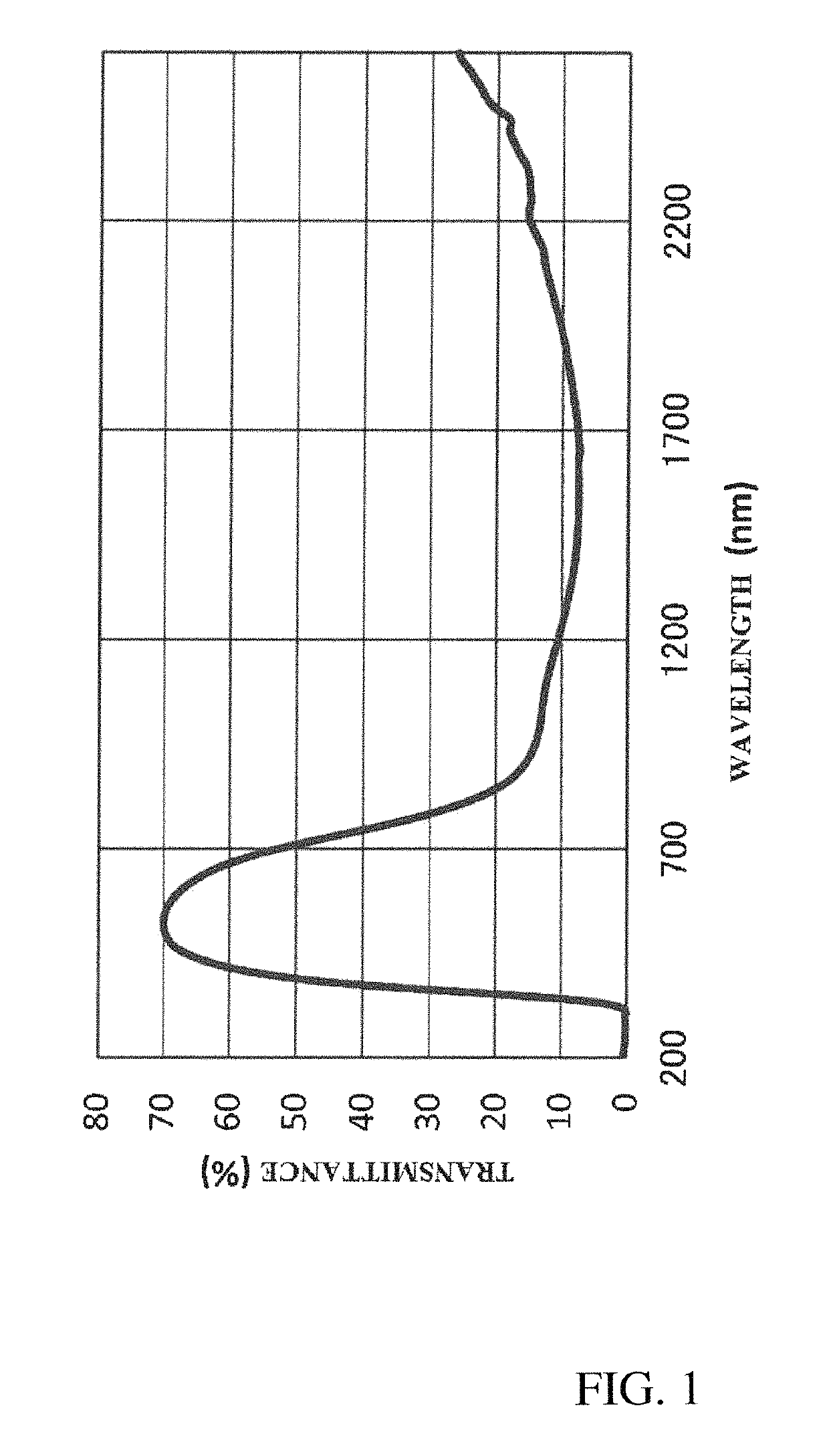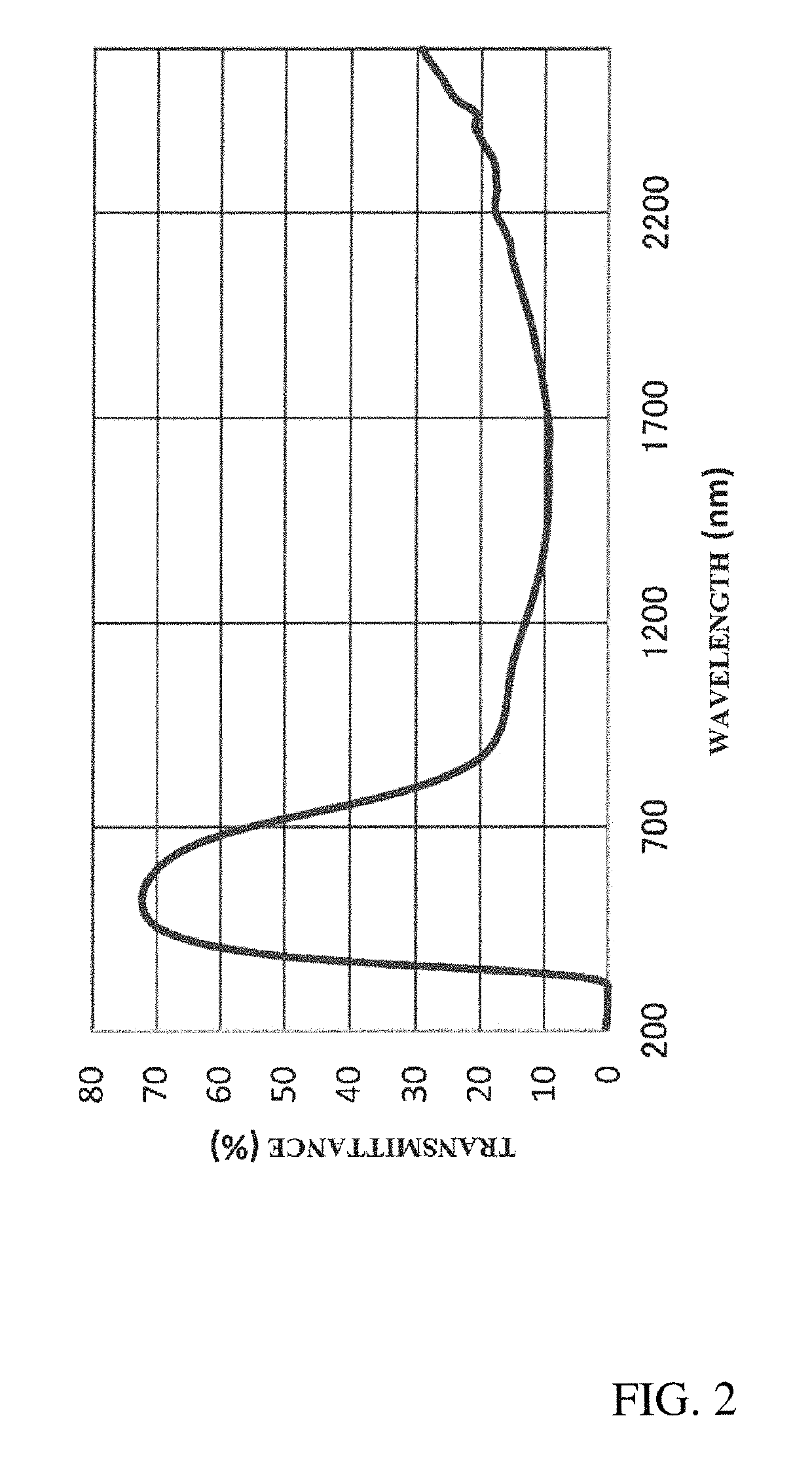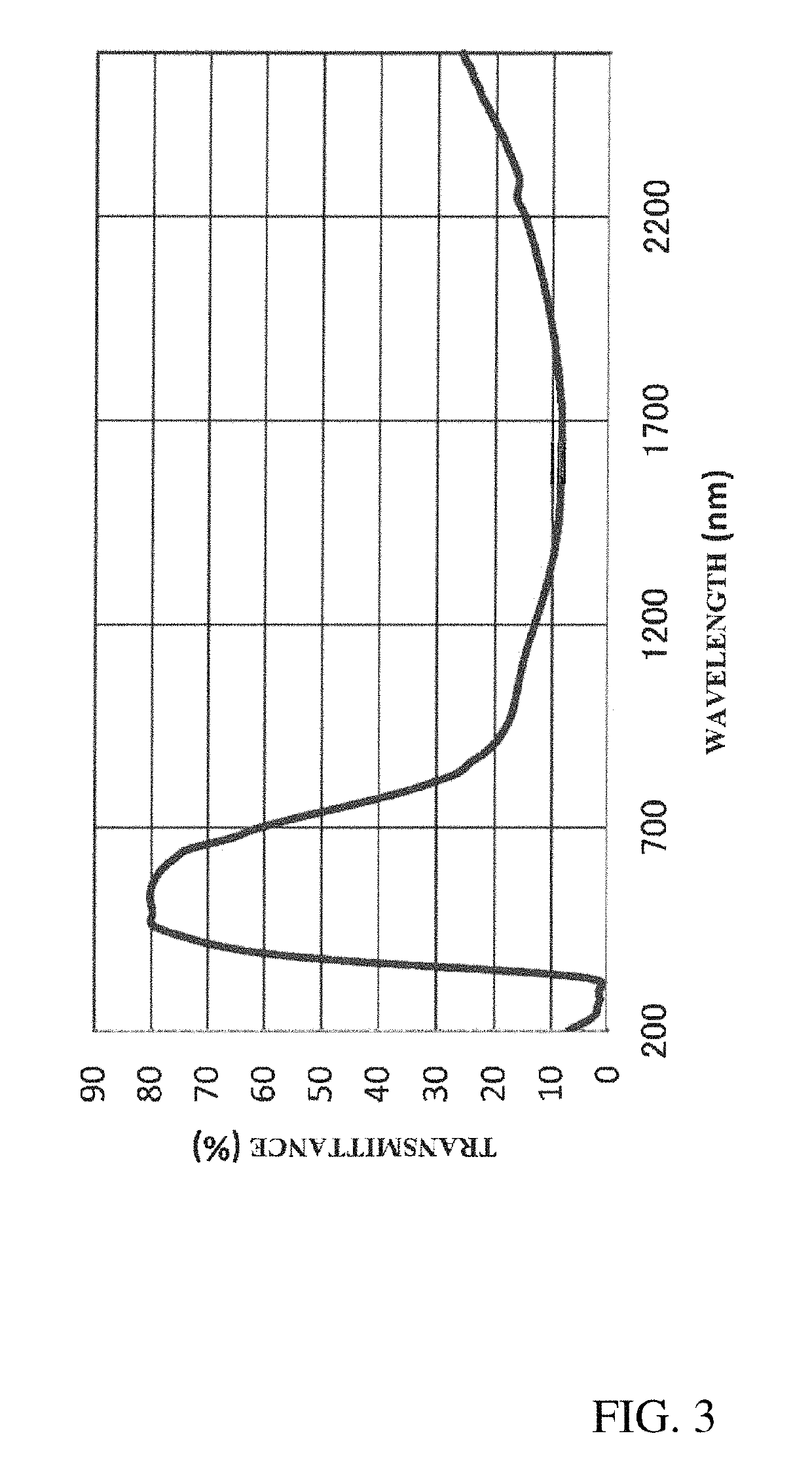Near-infrared absorbing fine particle dispersion liquid and method for producing the same
a technology dispersion liquid, which is applied in the direction of pigment paste, pigmenting treatment, other chemical processes, etc., can solve the problem that the appearance of infrared absorbing material cannot be determined, and achieve the effect of clear contrast and easy application
- Summary
- Abstract
- Description
- Claims
- Application Information
AI Technical Summary
Benefits of technology
Problems solved by technology
Method used
Image
Examples
example 1
[0085]23 mass % of hexagonal Cs0.33WO3 (a-axis: 0.74075 nm, c-axis: 0.76127 nm) which is a composite tungsten oxide as near infrared absorbing fine particles, and 11.5 mass % of a dispersant having a fatty acid and an amino group in its structure, having an acid value of 20.3 mg KOH / g, having a hydroxystearic acid chain, and having a nonvolatile content of 100% (hereinafter abbreviated as dispersant “a”), and 65.5% of sunflower oil as a solvent, were weighed.
[0086]These near infrared ray absorbing fine particles, dispersing agent and solvent were charged in a paint shaker containing 0.3 mmφ ZrO2 beads, pulverized and dispersed for 40 hours, to thereby obtain an infrared absorbing fine particle dispersion liquid (abbreviated as dispersion A hereafter) of example 1.
[0087]The dispersed particle size of the composite tungsten oxide fine particles in the dispersion liquid A was measured with a particle size distribution meter (manufactured by Otsuka Electronics Co., Ltd.) and it was foun...
example 2
[0091]In the same manner as in example 1 except that linseed oil was used as a solvent, a near infrared absorbing fine particle dispersion liquid (abbreviated as a dispersion B hereafter) of example 2 was obtained.
[0092]The dispersed particle size of the composite tungsten oxide fine particles in the dispersion liquid B was measured with a particle size distribution meter manufactured by Otsuka Electronics Co., and it was found to be 79 nm, and the viscosity (24° C.) of the dispersion B was found to be 91.4 mPa / S.
[0093]Next, in the same manner as in example 1, a dried film of example 2 was obtained and the optical properties were measured. FIG. 2 is a light transmission profile of the dried film of the dispersion liquid B.
example 3
[0094]In the same manner as in example 1 except that the dispersant having a fatty acid and an amino group in its structure, having an acid value of 5 mg KOH / g or more, having a hydroxystearic acid structure partially modified with caprolactone, and having a nonvolatile content of 100% (abbreviated as a dispersant “b” hereafter) was used, a near-infrared absorbing fine particle dispersion liquid (abbreviated as a dispersion liquid C hereafter) of example 3 was obtained.
[0095]The dispersed particle size of the composite tungsten oxide fine particles in the dispersion liquid C was measured with a particle size distribution meter manufactured by Otsuka Electronics Co., and it was found to be 80 nm, and the viscosity (24° C.) of the dispersion liquid C was 151 mPa / S.
[0096]Next, a dried film of example 3 was obtained in the same manner as in example 1, and the optical properties were measured. FIG. 3 is a light transmission profile of the dried film of the dispersion liquid C.
PUM
| Property | Measurement | Unit |
|---|---|---|
| particle size | aaaaa | aaaaa |
| viscosity | aaaaa | aaaaa |
| acid value | aaaaa | aaaaa |
Abstract
Description
Claims
Application Information
 Login to View More
Login to View More - R&D
- Intellectual Property
- Life Sciences
- Materials
- Tech Scout
- Unparalleled Data Quality
- Higher Quality Content
- 60% Fewer Hallucinations
Browse by: Latest US Patents, China's latest patents, Technical Efficacy Thesaurus, Application Domain, Technology Topic, Popular Technical Reports.
© 2025 PatSnap. All rights reserved.Legal|Privacy policy|Modern Slavery Act Transparency Statement|Sitemap|About US| Contact US: help@patsnap.com



